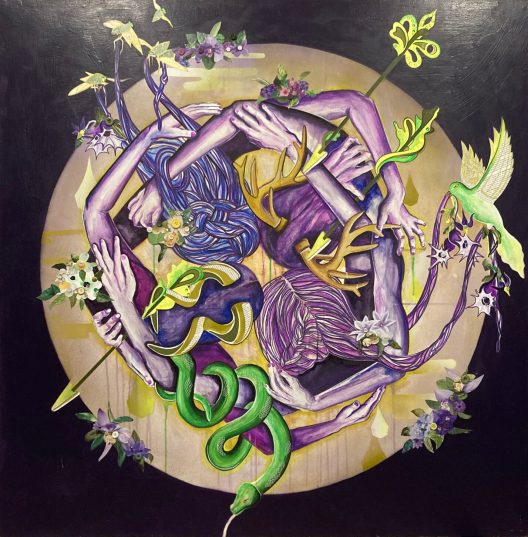Spring has sprung, and gardeners are busy. But so is the local wildlife. Wildlife, in particular deer and rabbits, can raze a garden of vegetables or flowers in no time.
And while gardeners rationally know animals are just trying to find sustenance, it’s frustrating when hours of hard work are diminished to nothing more than lunch for a mob of deer.
“It’s a never-ending battle,” said Dubuque master gardener Lou Ann Arensdorf. “They’re beautiful, cute little creatures, but not when they’re eating things in your yard.”
Ray Kruse, coordinator of the Dubuque County Master Gardeners program through the Iowa State University Dubuque County Extension, said animals are just like humans when it comes to their eating habits.
“If you put broccoli next to potato chips and strawberry ice cream, the ice cream will probably go first, then the chips, then maybe the broccoli,” he said. “It the same with deer. They’ll eat what’s delicious, but if they can’t find it, they’ll eat what’s not all that good, then they’ll eat whatever’s available.”
Netting, chicken wire or even better, a metal fence, will deter animals, but none of these options are foolproof. Netting and chicken wire can trap animals, including butterflies and hummingbirds, which can be beneficial for a garden. Metal fencing probably is prohibitive for many due to its cost, but it is the most effective way of keeping most animals, particularly deer, out of the garden.
“If a gardener wants to spend a fair amount of money and make it a more permanent investment, a metal fence is a good option,” Kruse said.
Planting in containers or stands close to your house might be an effective deterrent.
“Something that is more or less on your deck or closer to buildings becomes less attractive for deer or rabbits or wildlife in general,” Kruse said. “It also depends on how comfortable the wildlife is in your neighborhood. But it’s unlikely they’ll come up on a deck or on a porch.”
Arensdorf, who lives in rural Dubuque, has found that liquid deer and rabbit repellents, available locally at nurseries and home improvement stores, do the trick.
“I buy it in concentrated form because I use so much,” she said. “I mix it myself and spray every week and a half or so when the flowers are blooming.”
Arensdorf said she sprays the flowers that she knows they like. And while the initial odor of the repellent can be off-putting, it dissipates once it dries.
Another product that Arensdorf has found success with is milorganite, a low-dose, slow release organic biosolids fertilizer.
“The deer don’t like it,” she said. “So when things first start coming up, I spread the milorganite around to to give them a fighting chance.”
Arensdorf warns that even with an organic product, you have to be careful not to overfertilize.
Another organic option is hair, although Kruse said it is a temporary fix.
“The problem with a lot of deterrents is that they’re usually short-lived,” he said. “Rain will make the odor disappear.”
Container gardening is another option, since most containers will be on a porch or deck, or otherwise close to your home. Kruse advised to use the biggest containers you can to allow for growth.
“Roots are contained to the size of that container,” he said. “It’s like putting them in a bubble. So bigger is better in this case.”
Kruse said vegetable gardening also is possible in containers, although it can be more problematic than in a garden.
“It can be done,” he said. “A lot of people still like to grow vegetables like tomatoes and peppers in containers.”
Kruse said not to let the news of seed shortages this spring keep you from getting out and planting.
“It’s a perceived shortage,” he said. “All of this new interest in gardening (because of the pandemic) has seen a huge influx of people coming into the gardening arena, and they see something pretty or that tastes great, and those are selling out.”
While seed houses, like most businesses, are dealing with a lot of issues related to the pandemic, he said seeds are available if gardeners are willing to step out of the box a little bit.
“Look a little further,” he said. “Diversity your tastes a bit, and you’ll find plenty of seeds.”
Michelle London writes for the Telegraph Herald.
























